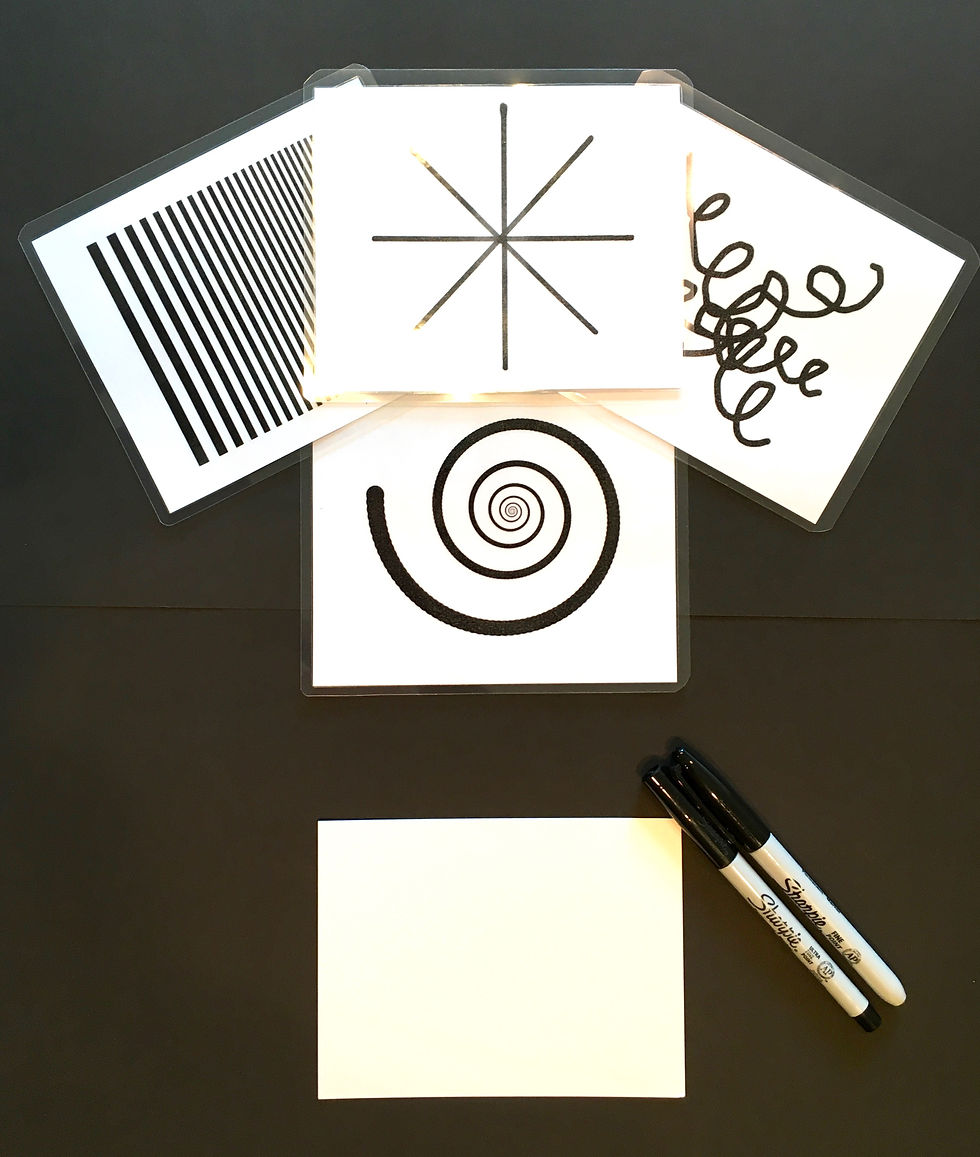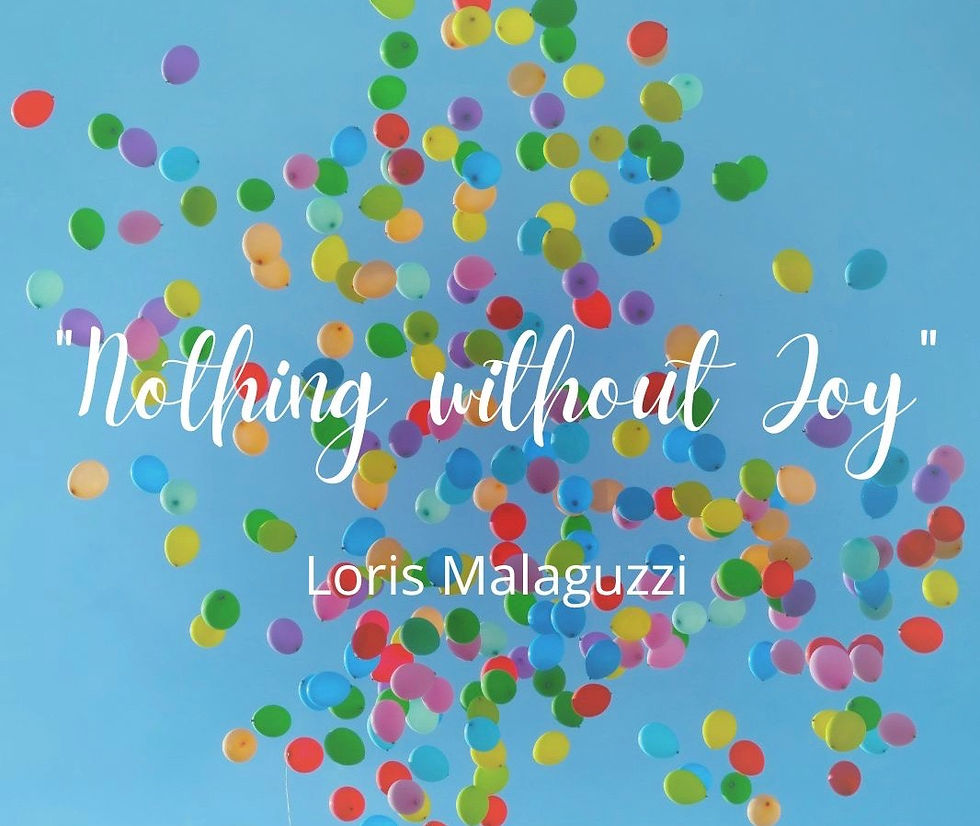Remote Reflections 5: Designing a Curriculum - "A Line is a Dot That Went for a Walk"
- marywbell53
- Mar 6, 2022
- 4 min read
Updated: Apr 25, 2022
“A line is a dot that went for a walk.” This quote from artist Paul Klee is a vivid metaphor for line as process and motion – two words that are equally descriptive of children’s approach to art.

This experience was the second of a three-part exploration of color and line.
In the first, the children combined primary liquid watercolors to create varying tones of secondary colors. In the third, the children again used red, yellow, and blue watercolors to transform the line drawings they created during this experience. I have facilitated similar explorations as a Studio teacher, and was able to translate them to remote learning with minimal adaptations.
Why...
Line is a fundamental element of all the arts. The two-dimensional lines in drawings and paintings may be most familiar; but equally important are the three-dimensional lines in sculpture and architecture, the melodic lines in music, and fluid lines of a dancer’s body in motion.
Fostering children’s awareness and understanding of line not only encourages them to think about the role of line in their own artistic creations, but also invites them to look at the world through the “lens of line” and see relationships among otherwise unrelated objects and experiences.
What and How...
The materials were the same as those for in-person learning:
· Laminated images of four basic line types
· Fine and ultra-fine tipped black permanent marker pens.
40-pound watercolor paper

Remote learning required that I print and laminate one set of line images for each child, rather creating than one set for the classroom. Similarly, each child needed an individual set of permanent marker pens. Permanent markers create rich black lines, allow the children to add watercolors to their drawings, and can be used for many other experiences.
I purchased a pad of 9” by 12” watercolor paper, cutting each piece into fourths. This allowed each child to create 12 drawings from three pieces of paper.. The total cost was $2.50 per child.
Every line tells a story...
To begin our exploration, I invited the children to find stories in parallel, intersecting, curved, and spiral line images during Morning Meeting by asking:
“What do you notice about the lines?"
"What do they remind you of?"
Their responses, like those of the children who had worked with me in a Studio space, were insightful, creative, and demonstrated children’s ability to make connections between an abstract symbol and their prior knowledge and experiences.
“

"It looks like stripes.”
“It’s like a piano.”
“It looks like a zebra.”

“It looks like a spider web.”
“It’s like fireworks.”
“It’s like the sun.”

“It’s squiggly!”
“It’s curly, like hair.”
“It’s like a pig’s tail.”
And, like the artist Friedensreich Hundertwasser,
the children were fascinated by the spiral.

“It looks like a snail.”
“It’s like water going down a drain.”
"It’s like a tornado.”
Then we talked about the permanent markers. I drew a line with each – one thick, one thin - and encouraged the children to choose a pen based on the kind of line they wanted to create. I explained that these were special pens, usually used by grown-ups, and that their marks would not easily wash out of clothing or off surfaces.
The children working at home, like those with whom I worked in a Studio, responded to my confidence in their capabilities by using the materials with care and respect.
The children explored varying approaches to drawing during our individual meetings – replicating the lines, combining or modifying them, and including them in abstract or representational designs.
I encouraged the children to draw slowly, to better control where and how the pen moved. I focus as much, if not more, on how children draw than what they draw. When children no longer rush to complete one drawing so they can begin another, their work becomes more detailed and intentional.
These drawings and their transformation with color, created by children who worked with me in a Studio setting, reflect the rich variety of responses to this experience.






Going on a Line Hunt...
One of the joys of a social-constructivist approach to teaching is not knowing where a provocation - whether a material, a question, an idea, or an experience – might lead.
I had no idea that a simple walk, one of my few outings during the pandemic, would add an entirely new dimension to this exploration. As I was walking and thinking about school, as I often do, I noticed the array of lines in the houses, fences, lampposts, and vegetation throughout my neighborhood. I took some photos and shared them with the children during our next Morning Meeting.



Seeing the children’s enthusiastic response to my photos, I invited them to go on a “line hunt” and take photos of the lines they found in their homes and neighborhoods.

The children responded to my invitation like explorers embarking on a great adventure. They found parallel lines in air conditioners and piano keys, intersecting lines in drawer pulls and gates, curved lines in fabric and plants, and spiral lines in decorative masks and board game designs - often holding or placing the line image next to the object to confirm their discovery.

With the help and participation of parents and caregivers, we soon had enough photos to make a class book!
I printed a copy of the book for each of the children and included it in their Learning at Home packets. Their faces were beaming with smiles as we read our book together during Morning Meeting.
When I have explored the concept of line with children in the past, our conversations and their drawings were the focus of the experience. This time, it was children and families going on a “line hunt”, taking photos to share with the class, and creating a class book that will remain in my memory long after their drawings have been forgotten.
After being confined to our homes and neighborhoods for so many months, this exploration gave us a reason to look at our surroundings with a fresh perspective and renewed appreciation.
The class book that emerged from sharing our experiences reflected all of us; and when we read it together at Morning Meeting, what once was a group of strangers felt like a community.



Comments